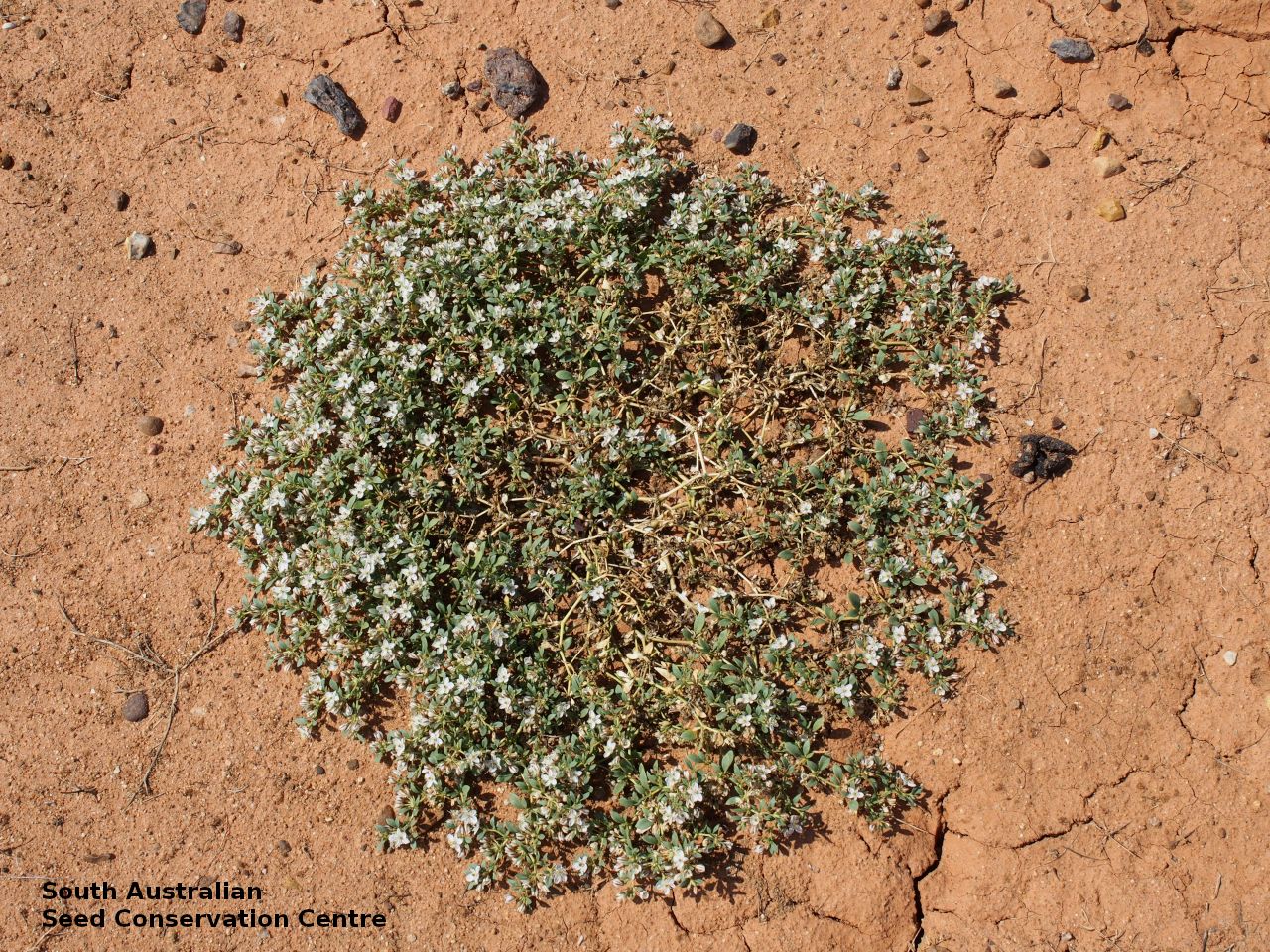
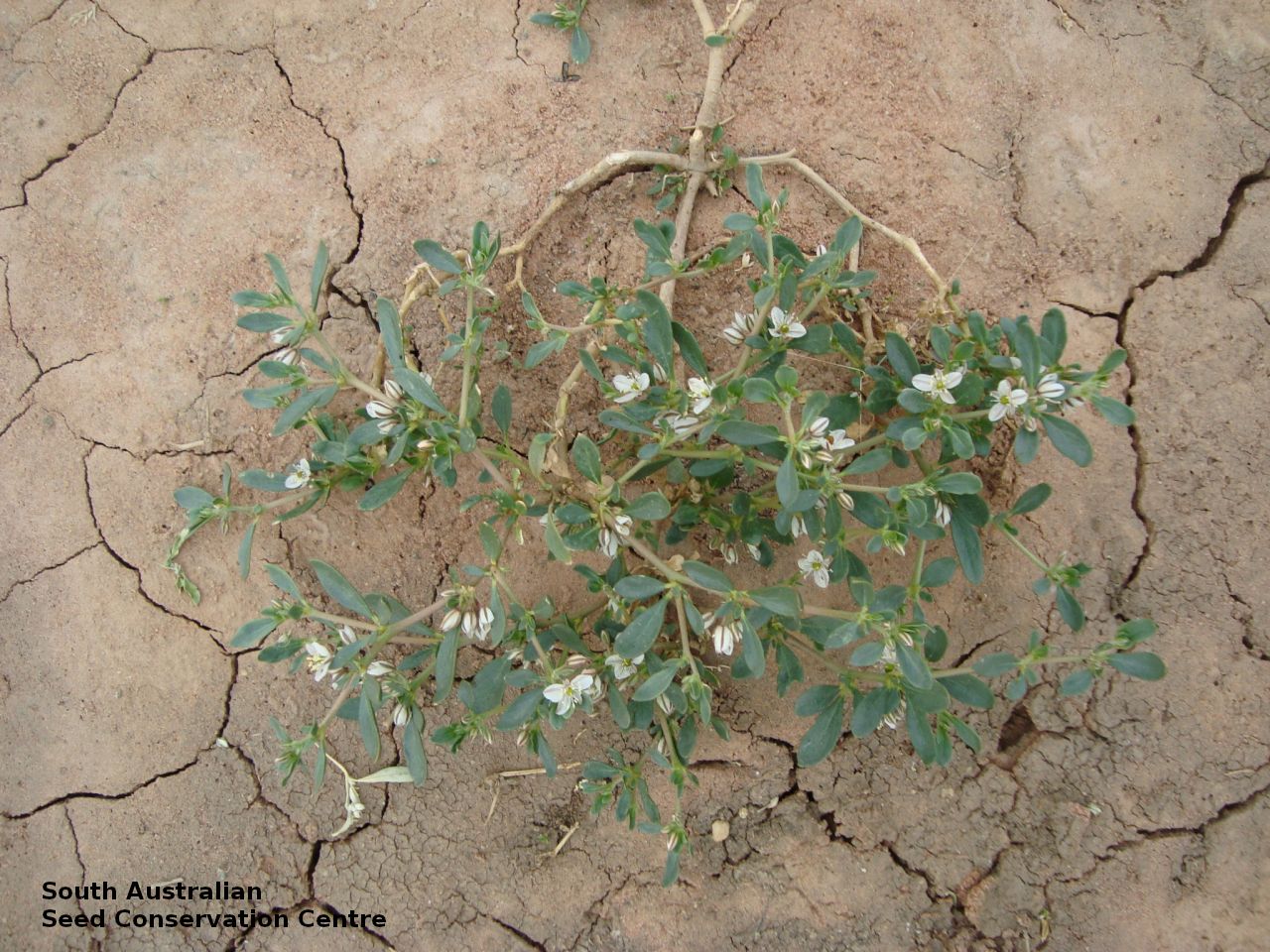
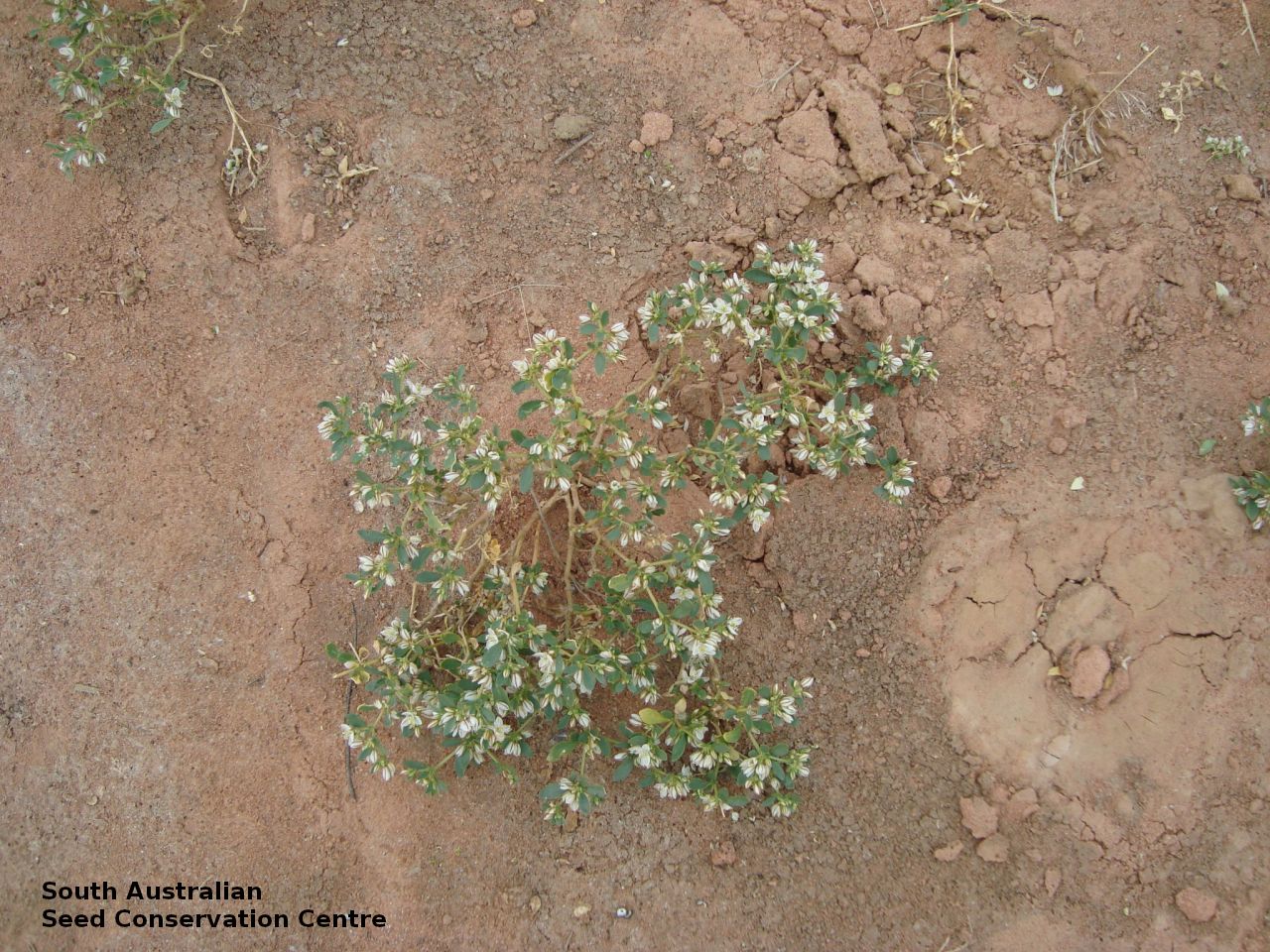
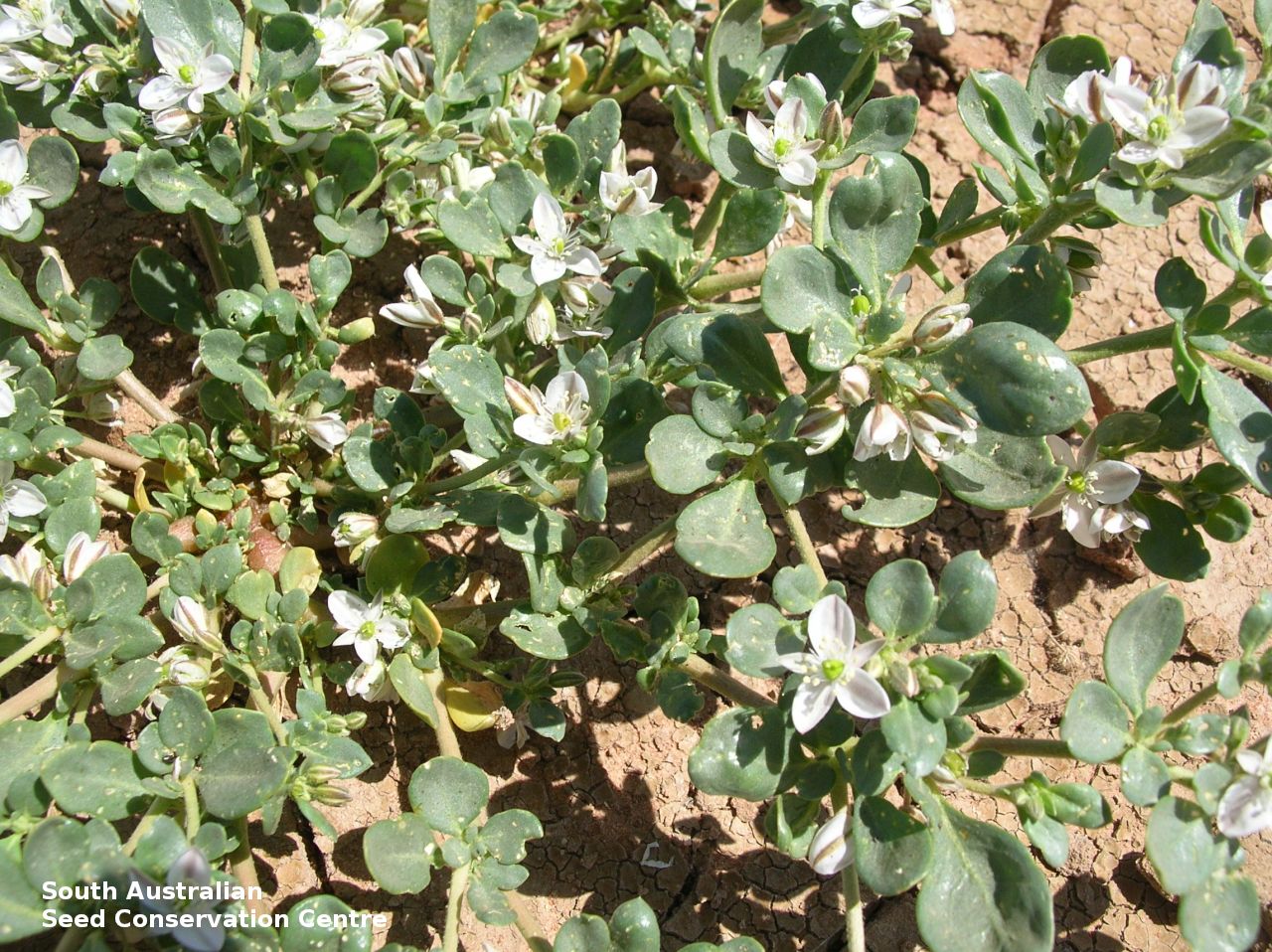
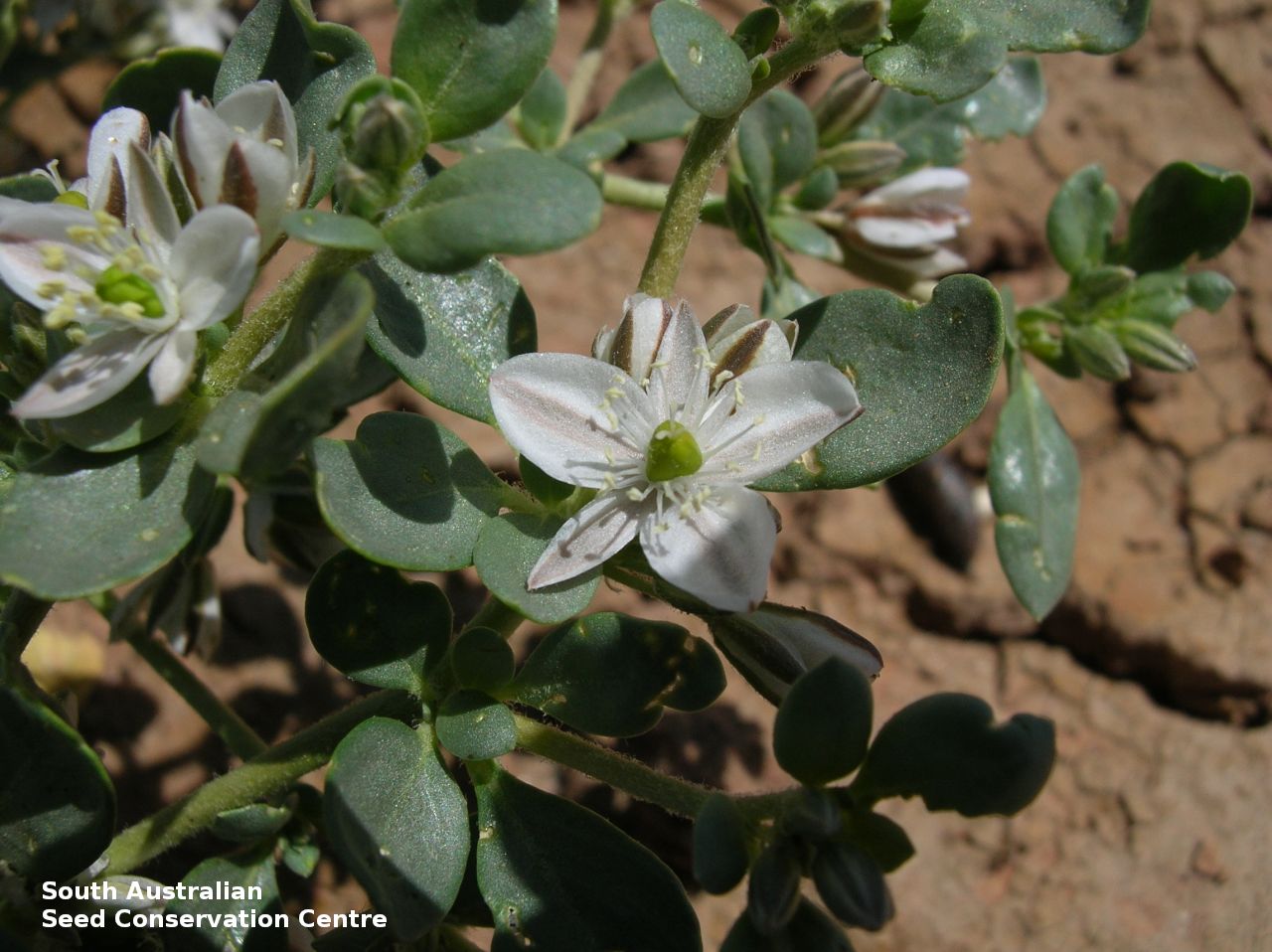
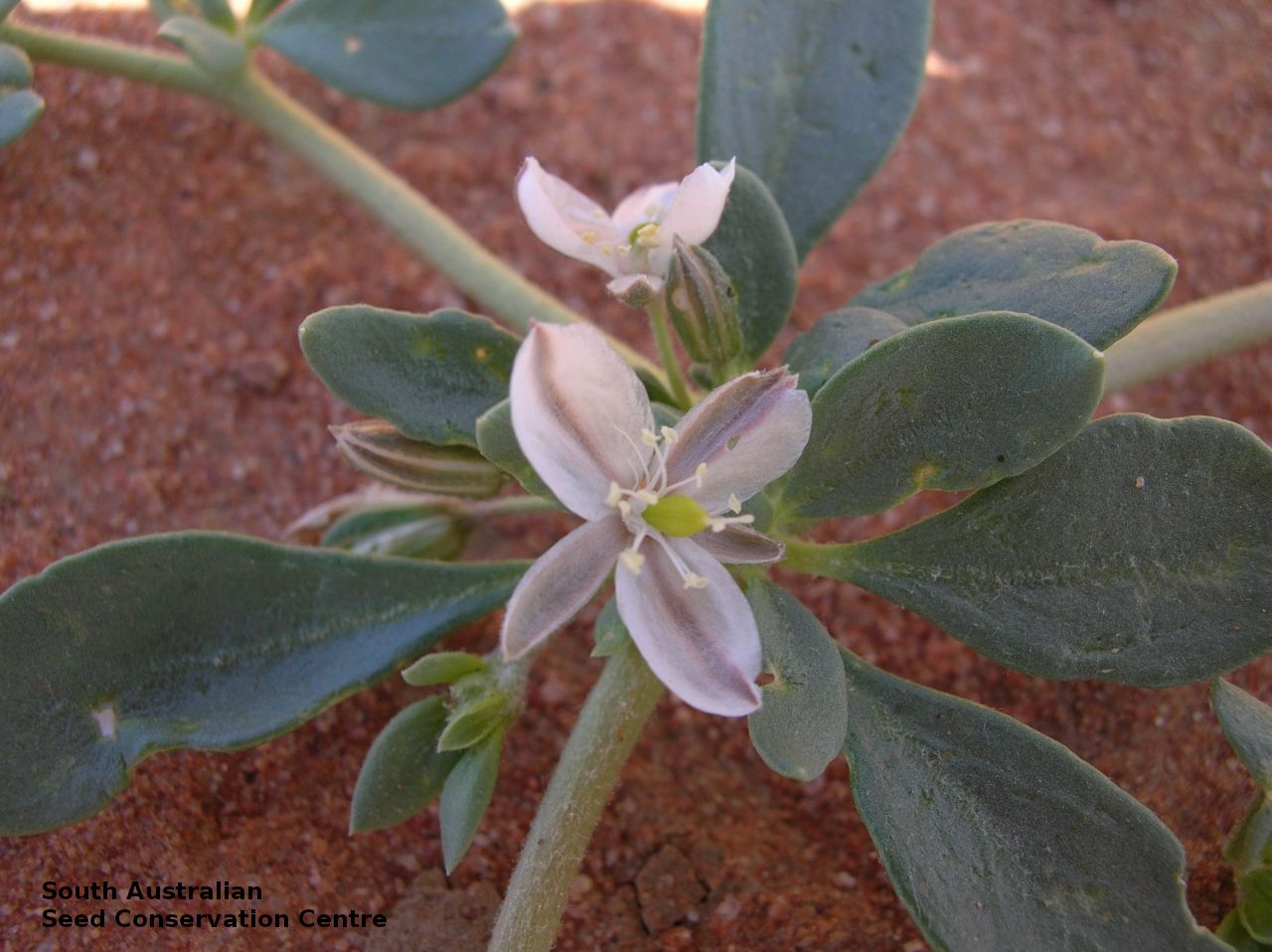
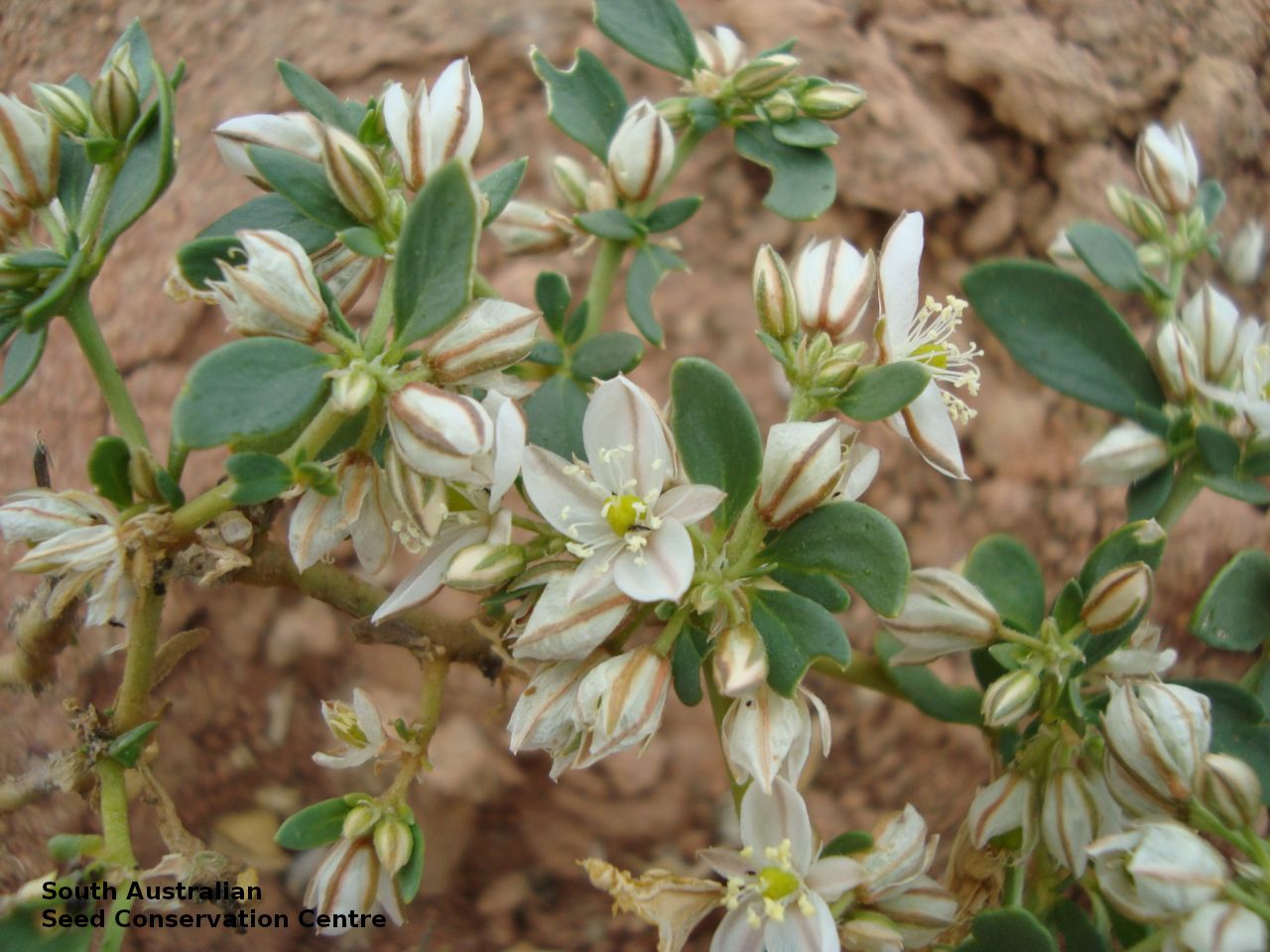
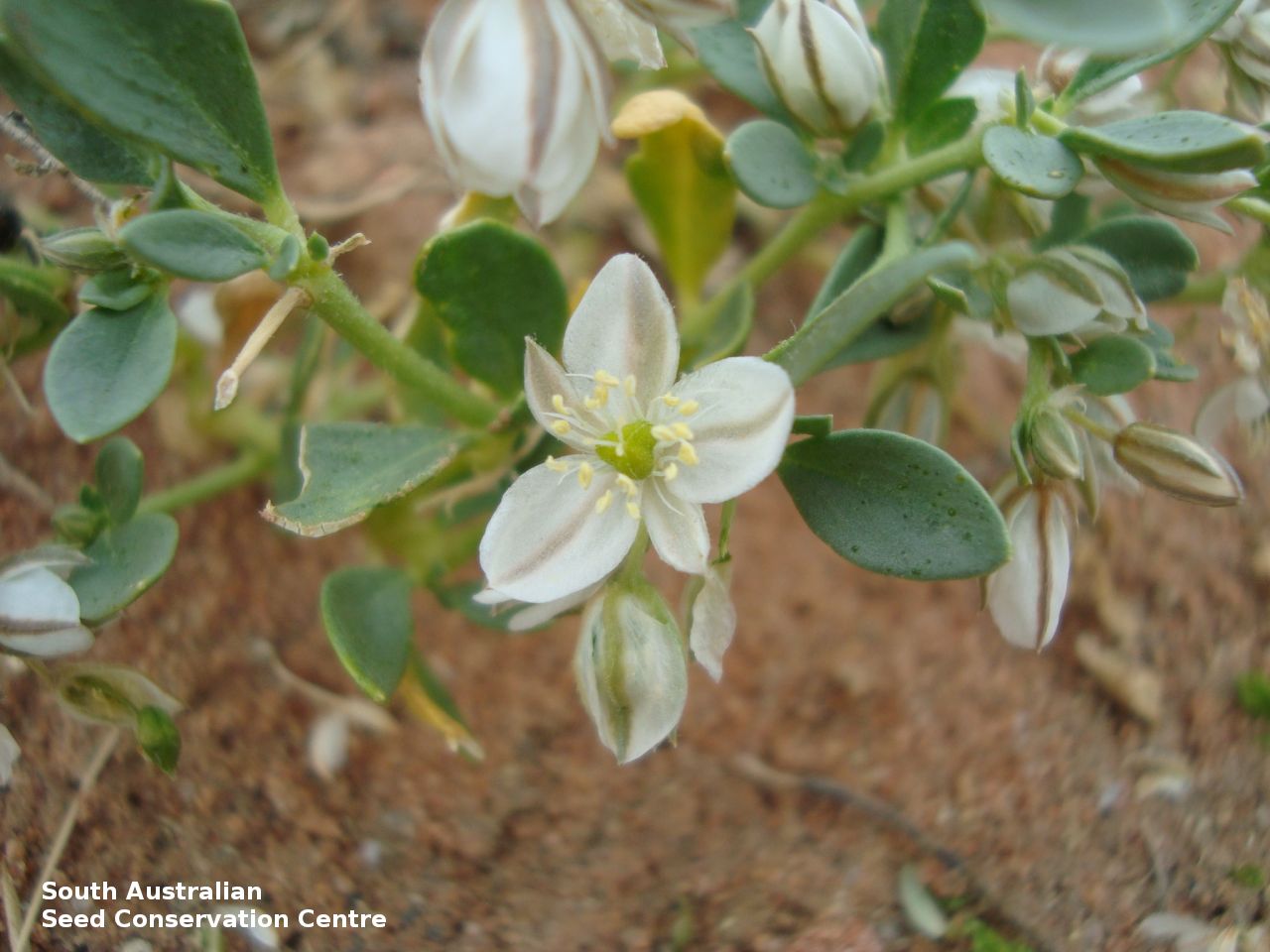
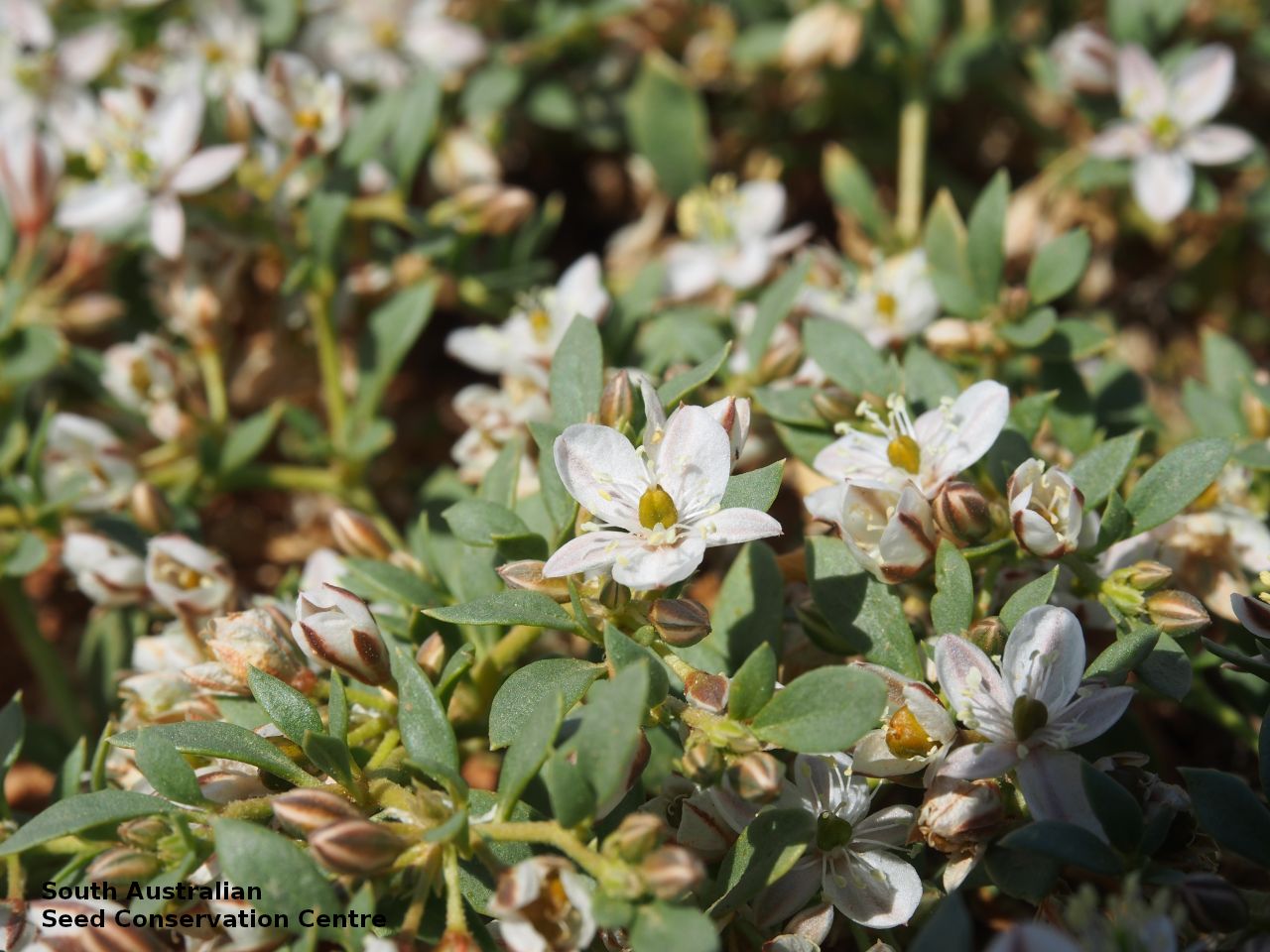
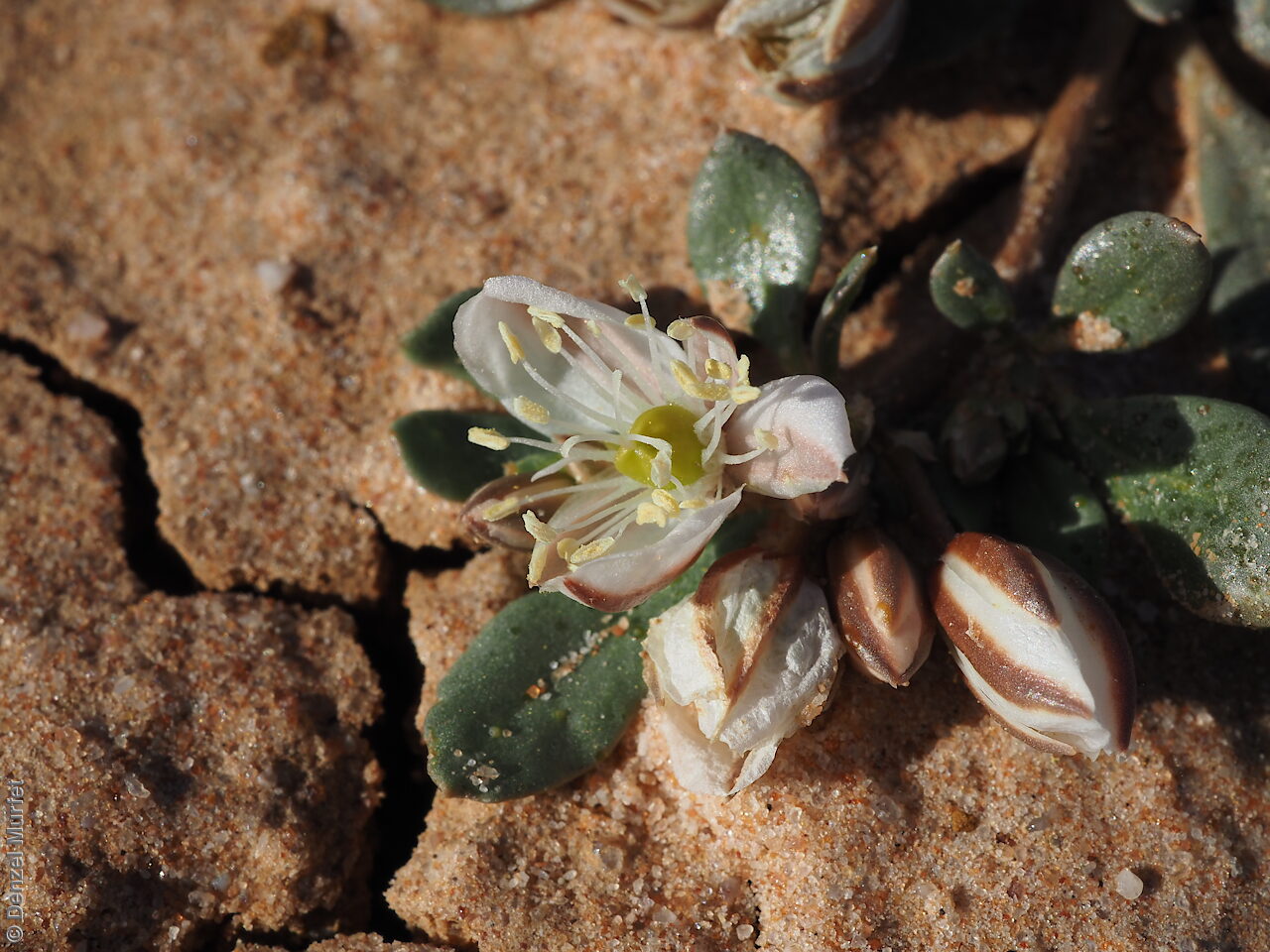
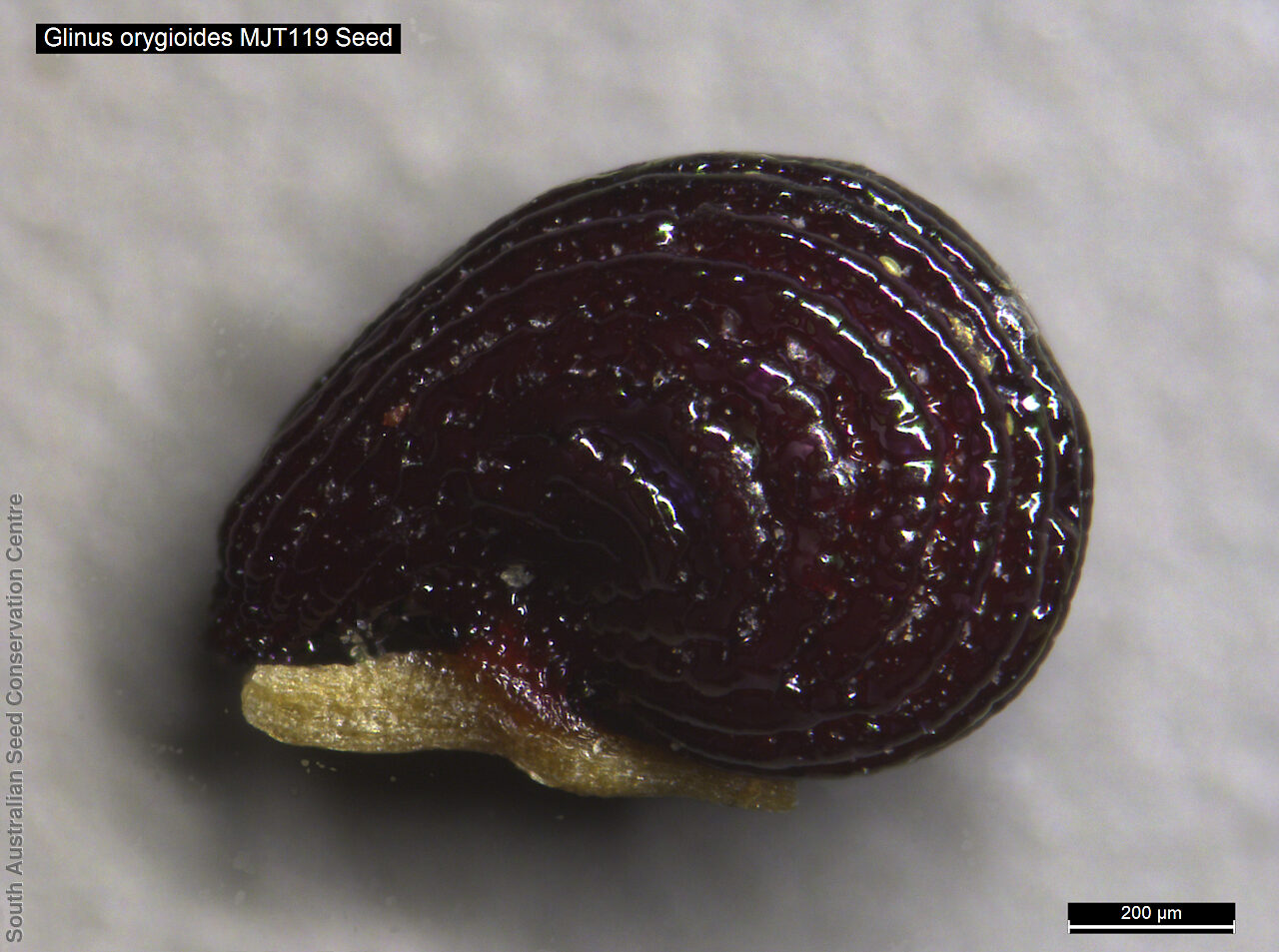
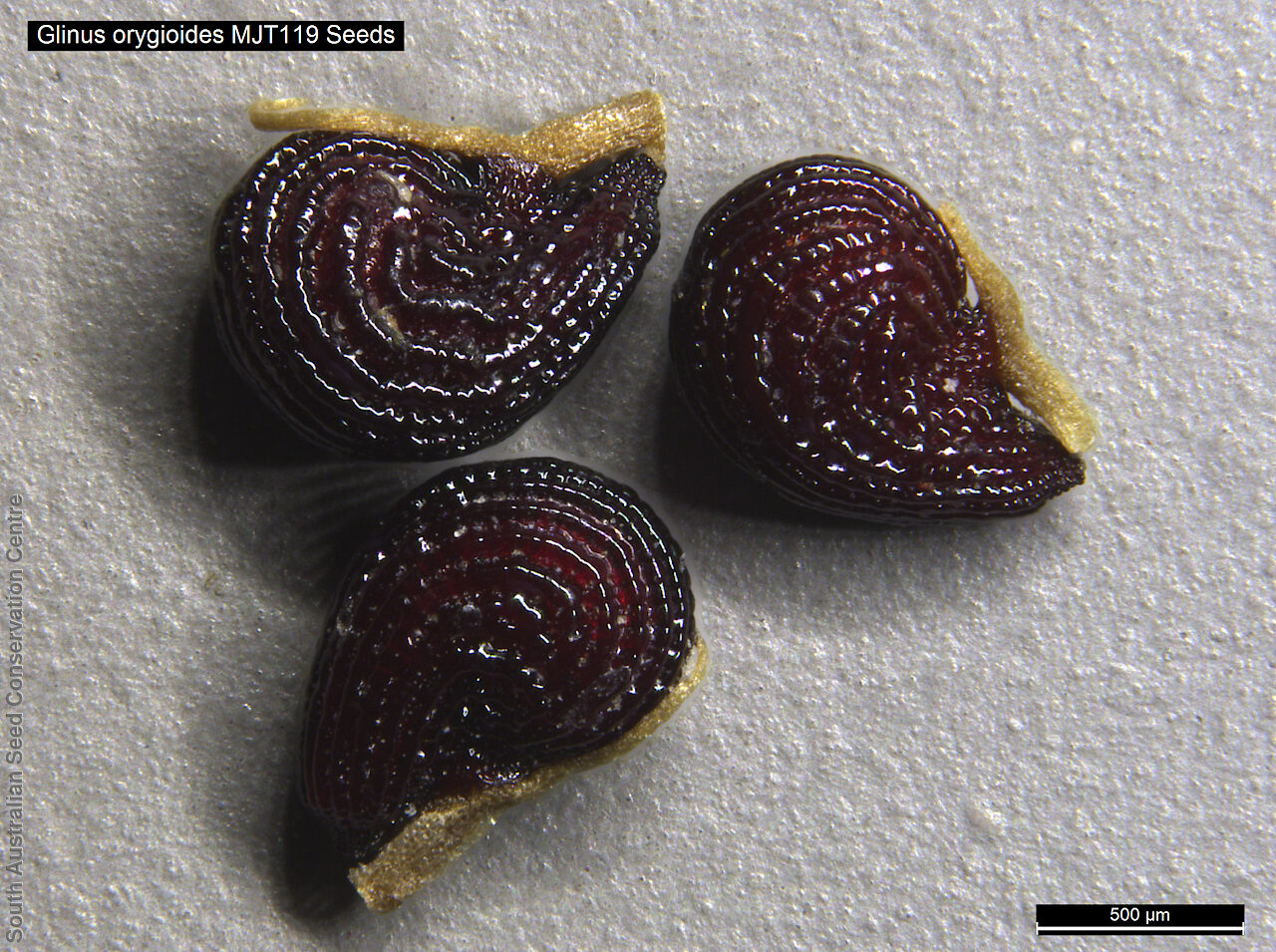


Prior names
Mollugo orygioides
Etymology
Glinus from the Greek 'glinos' meaning a plant with sweet sap. May have been a reference to maple. Orygioides means resembling the genus Orygia.
Distribution and status
Found in north and north-eastern South Australia growing in seasonally damp places. Also found in Western Australia, Northern Territory, Queensland and New South Wales. Native. Rare in south Australia. Presume extinct in New South Wales. Uncommon in the other States.
Herbarium region: Lake Eyre
NRM region: South Australian Arid Lands
AVH map: SA distribution map (external link)
Plant description
Prostrate or spreading perennial herb to 50 cm diameter; the whole plant glabrous except for the youngest parts. Leaves opposite and/or alternate, semi-succulent, oblanceolate to obovate to 15 mm long, obtuse. Flowers in terminal, or less often, leaf-opposed clusters. Perianth segments white or with a pinkish tinge. Stamens 15�20 with a few staminodes; carpels 3 or 4; styles 3 or 4. Flowers possibly all year round. Fruits are brown capsules. Seeds are shiny red-black, reniform seed to 1.2 mm long and 0.7 mm wide, with striated surface. Seeds larger than in the other two species. Seed embryo type is peripheral.
Seed collection and propagation
Collect seeds between January and December. Collect capsules that are maturing, turning brown and contain hard, brown seeds inside. Place the capsules in a tray and leave to dry for one to two weeks. Then rub the capsules gently by hand to dislodge the seeds. Use a sieve to separate the unwanted material. Be careful as the seeds are very small. Store the seeds with a desiccant such as dried silica beads or dry rice, in an air tight container in a cool and dry place. From one collection, the seed viability was average, at 70%. This species has physiological dormancy and can be difficult to germinate.
| Location | No. of seeds (weight grams) | Number of plants | Date collected | Collection number Collection location | Date stored | % Viability | Storage temperature |
|---|---|---|---|---|---|---|---|
| BGA MSB | 9,000 (1.9 g) 9,000 (1.9 g) | 50+ | 29-Sep-2007 | MJT119 Lake Eyre | 19-Sep-2008 | 70% | -18°C |
Number of plants: This is the number of plants from which the seeds were collected.
Collection location: The Herbarium of South Australia's region name.
% Viability: Percentage of filled healthy seeds determined by a cut test or x-ray.